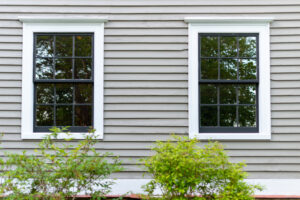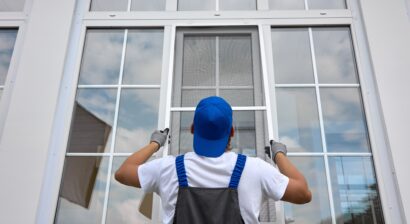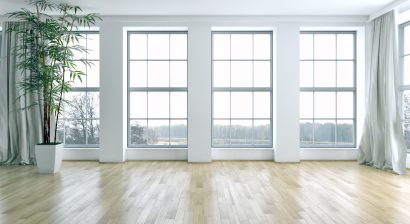Pros and Cons to Installing Double-Pane Windows

Double-pane windows are highly regarded for their energy-saving capabilities, potentially leading to cost savings and an uptick in your home’s value. Is this reputation well-founded?
Citing the Department of Energy, it’s revealed that windows contribute to a substantial 25 – 30 percent of energy loss in a household. The pivotal factor in achieving energy efficiency, financial benefits, and enhanced home comfort lies in selecting the appropriate windows and relying on a skilled professional installer. This not only results in more money saved but also ensures a more comfortable living environment.
Varieties of Double-Pane Windows
While double-pane windows are widely favored, it’s essential to recognize the diverse types available. This range ensures a tailored fit for every home, and comprehending these options can assist in making a decision that aligns seamlessly with your specific needs and preferences.
Options for Window Frame Materials
Double-pane window frames can be crafted from a variety of materials, each boasting unique advantages. Vinyl frames are recognized for their cost-effectiveness, energy efficiency, and low maintenance. Wood frames exude a classic charm with a timeless aesthetic, although they demand regular upkeep. Meanwhile, aluminum frames are both durable and slender, ideal for contemporary designs. Fiberglass frames stand out for their robustness and ability to withstand temperature fluctuations, ensuring long-lasting durability.
Gas Infusion
Within the window panes, manufacturers frequently introduce inert gases such as Argon or Krypton. These gases, denser than air, create an extra layer of insulation, diminishing heat transfer, and elevating energy efficiency. Although a subtle feature, it plays a crucial role in preserving a comfortable home environment.
Options for Glazing
Differences in glazing, or the glass utilized, also exist. Low-E (low-emissivity) glass is equipped with a special coating that reflects infrared light, maintaining warmth in winter and coolness in summer. Tinted glass is effective in reducing glare and UV exposure, offering added protection and comfort.
Variety in Designs
Double-pane windows boast a plethora of designs, ensuring every homeowner discovers their ideal match. Whether opting for sliding, casement, awning, bay, or bow windows, there’s a style that harmonizes with both your home’s architecture and personal taste.
Options for Personalization
Numerous manufacturers provide customization options, enabling homeowners to choose particular features, dimensions, and finishes that harmonize with their home décor and architectural style. This ensures a smooth integration with the existing aesthetic.
Ratings for Energy Efficiency
When selecting double-paned windows, it’s crucial to consider the energy efficiency rating. Various models exhibit differing levels of efficiency, and comprehending these ratings can assist you in making an educated decision, maximizing the advantages of your investment.
Single-Pane vs. Double-Pane vs. Triple-Pane Windows
When considering window options, it’s vital to conduct a comparative analysis to make an informed decision that matches your needs and preferences. In this section, we’ll contrast double-paned windows with single and triple-paned counterparts to provide a clearer picture of what each offers.
Single-Pane Windows
Single-pane windows feature a single layer of glass. These are typically found in older homes and are less expensive upfront. However, they lack the insulation and energy efficiency that multiple panes provide. This means potentially higher energy bills as they struggle to maintain a stable indoor temperature, and they are often less effective in noise reduction, making them a less desirable option for those in bustling, noisy environments.
Double-Pane Windows
Double-pane windows provide superior insulation, reducing energy consumption and subsequently lowering energy bills. They offer a balanced compromise between performance and cost, presenting a middle ground in terms of investment and energy efficiency. They are an excellent choice for homeowners looking to enhance comfort and decrease energy expenditure without breaking the bank.
Triple-Pane Windows
Triple-pane windows are the best choice if you are looking for greater insulation and energy efficiency. They consist of three glass layers, often filled with inert gas, providing unparalleled thermal performance. These windows are especially advantageous in extreme climates, where maintaining a consistent indoor temperature is paramount. However, the additional layer means a heftier price tag and potentially a more cumbersome installation process due to the increased weight.
Pros and Cons of Double-Pane Windows
Double-pane windows stand out as a more energy-efficient choice, yet, like any home improvement, they come with their set of advantages and disadvantages. Let’s delve into them below.
Pros of Double-Pane Windows
- Lower Energy Bills: Improved insulation results in reduced energy usage, leading to lower utility bills. In winter, they retain warmth, minimizing furnace usage, and in summer, they keep out heat, reducing the need for air conditioning.
- Enhanced Comfort: Maintaining a consistent temperature with less reliance on heating or cooling systems creates a more comfortable living environment throughout the year.
- Environmental Benefits: Reduced energy consumption contributes to a smaller carbon footprint, aiding in the reduction of fossil fuel usage and greenhouse gas emissions.
- Improved Security: Double-pane windows enhance home security as they are more challenging to break into compared to single-pane windows. Additional features, such as tougher glass, can be added for increased protection.
- Elimination of Condensation: The design minimizes condensation issues by preventing the inner window from being exposed to the temperature extremes outside, reducing the risk of moisture build-up and subsequent mildew growth.
Cons of Double-Paned Windows
- Higher Initial Investment: While all windows represent an investment, double-pane windows come with a higher upfront cost compared to single-pane alternatives. However, this cost should be weighed against long-term energy savings.
- Whole-Home Upgrade Requirement: You cannot selectively replace a single window with double-pane windows without affecting the overall aesthetic. Inconsistencies in window types can create an awkward look and compromise the energy efficiency benefits.
- Compatibility Issues with Some Homes: In certain cases, especially in older or uniquely designed homes, double-pane windows may not seamlessly blend in, potentially clashing with the architectural character of the property.
Conclusion
When deciding on the optimal window type, take into account elements like climate, budget, and individual requirements to ensure that your choice seamlessly integrates with your home and lifestyle. While double-pane windows constitute an investment, the returns are substantial, contributing to the enhanced value of your home. Beyond their energy efficiency, these windows also add aesthetic charm, elevating your home’s overall curb appeal.





